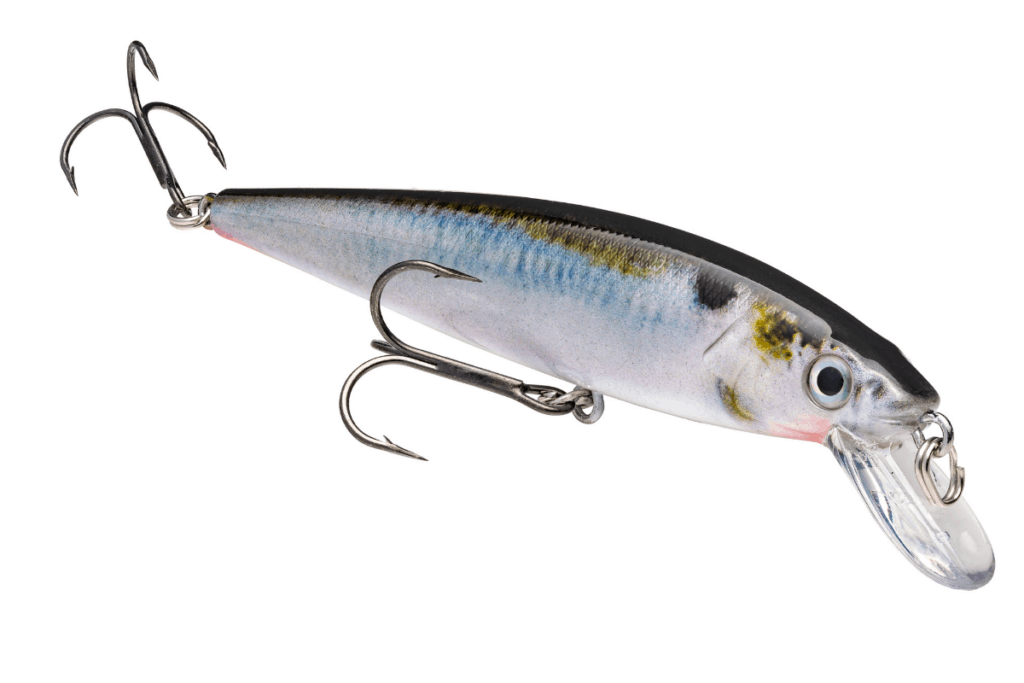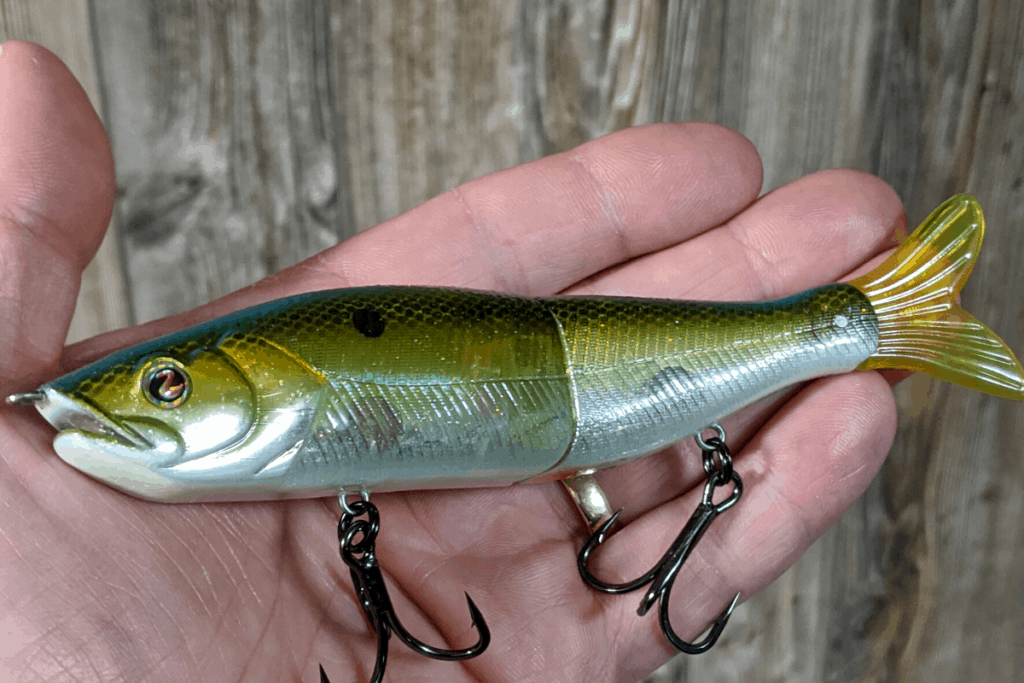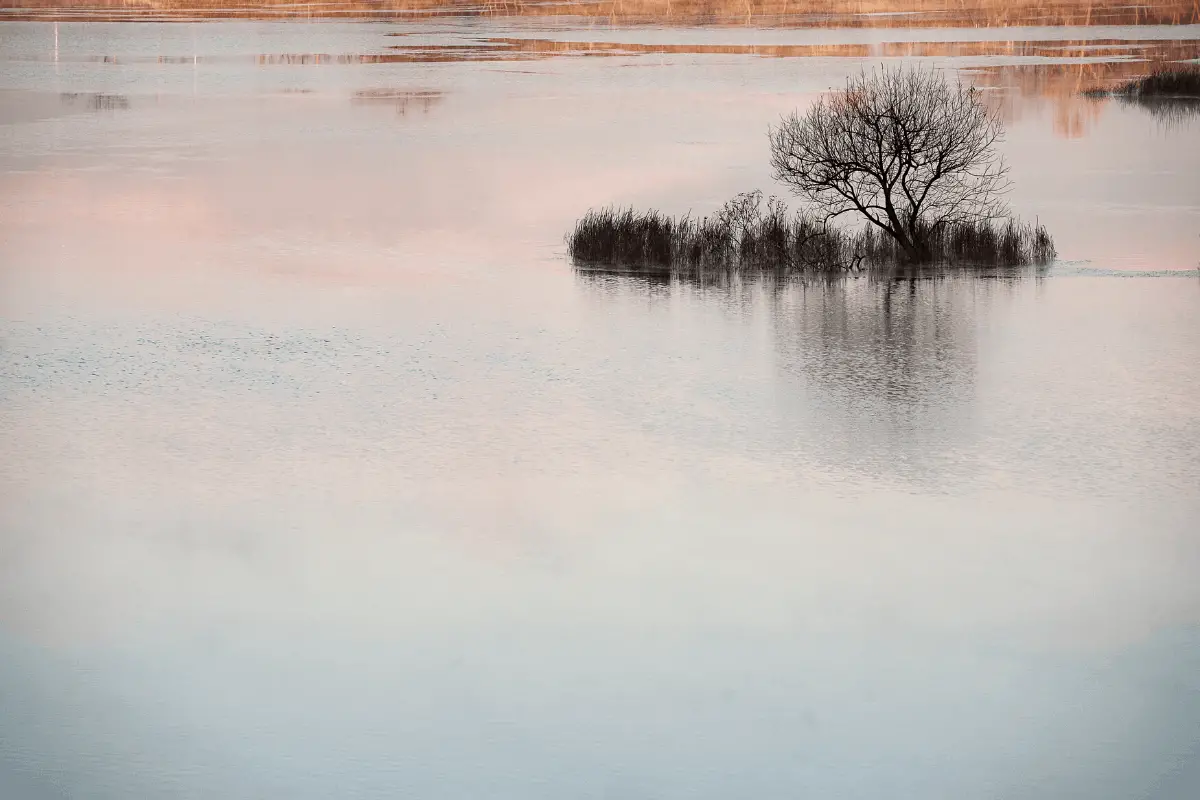It is an exciting time when the ice comes off the water and you know that spring is coming soon. Dreams of big bass fill our minds, but there is a certain approach that I use to narrow down where those bass are at, and most importantly, how to catch them.
Focus on channels or coves that come off the main lake and lead to traditional spawning areas. If the water is below 50°use a suspending jerkbait, if the water is just above 50° switch to a big glide bait. Often, the bass will be hanging on secondary points in those coves, channels, and creek arms.
In this article, we will break down how I approach late winter and early spring bass fishing.
A Lake Within a Lake
The first thing that I do, is to narrow down my search area. I am not interested in covering a large amount of water. On a traditional reservoir or lake system, I will focus my efforts on one particular cove, creek channel, or bay.
I start at the main point leading into this area and cover each secondary point thoroughly as I head all the way to the back of the cove. A secondary point is any point after the primary point. If there are five points between the entrance of the bay and the back pocket, all of these are considered secondary points.
The bass will be somewhere along this stretch. The awesome part is, if you find them on the third point back, this is most likely a repeatable pattern that can be applied to other coves across the lake.
Lure Choice for Late Winter Fishing
For my lure selection, I keep it very simple. If the water is below that 50° mark I will stick with a suspending jerkbait. If the water breaks that 50° mark I will switch over to large glide baits. I will also use a tight wobbling crankbait, but I will discuss that later.

Suspending Jerkbaits
A suspending jerkbait is an excellent choice to locate and catch those bass in the late winter and early spring. The fish are wanting to move shallower, and that is the perfect scenario for a jerkbait.
If I believe that the fish are hanging in water that is 15’ deep or less, I am very confident that the jerkbait is going to get the job done.
Equipment
I will stick with low gear ratio reels, a rod with a medium power rating, and 10lb fluoro or braid with a fluoro leader.
Lure Selection
In cold water, I prefer to stick with a smaller jerkbait. One with two sets of trebles is my go-to, but if I use a three treble version, I want the hooks to be small.
Natural colors are always my starting place. Match the forage in your lake. If you have predominantly shad use silvers and whites, if you have lots of bluegill, switch to something with more greens and yellows in it.
The Retrieve
Even though it is not the dead of winter, I still prefer a slower cadence when fishing a jerkbait this time of year. The air temperature may be getting comfortable, but those water temps are still cold.
Make long casts towards the bank.
Reel the suspending jerkbait down to depth and then let it sit. Be sure to twitch it on a slack line, not a tight line. Twitching on a slack line will ensure that the lure has the most action and side-to-side sashay.
Between twitches, leave is sit suspended. Most strikes are going to occur just after the twitch and you will then notice you have a fish the next time you go to move the lure.
Reel down and use a side sweep to set the hook.

Glide Bait
If the water is over 50° I will then switch over to a big glide bait.
The Lure
It’s important to know what a glide bait is. Unlike large soft plastic swim baits, a glide bait is made from hard plastic. The back tail does not wobble like on a soft plastic lure. Many of them on the market are quite large and they can get pricey. (Some nearing $100)
Don’t panic though, there are plenty in that $15-$40 range that work quite well.
The bass get a real good look at a glide bait when you are fishing it. Ultra realistic details on the lure will help to convince that big bass that what you are offering to them is in fact a real meal.
The Equipment
I like to use a low gear ratio reel to make sure my retrieve is slow enough and I pair it with fluorocarbon line in that 15-20lb test range.
As far as the rod, it is critical to have one with some flex to it. Imagine an extra large cranking rod. Glide baits traditionally have large trebles and, as anglers, we do not want to pull those trebles from the fish.
A medium action rod with good parabolic action will ensure that those fish stay hooked and you can land them. Rods that are anywhere from 7’6” to 8’ are excellent glide bait rods.
The Retrieve
Keep it simple. Let that bait work from side-to-side. The only action you need to impart comes from the reel. Give the handle a quick crank, pause, and then repeat. This allows the glide bait to make long sweeps to the left and right.
When you get a strike, just reel down and maintain pressure on the fish.
The Third Bait I Will Use – Tight Wobbling Crankbaits
The other bait that I like to use when fishing late winter and early spring conditions, is a tight wobbling crankbait.
Why a crankbait with a tight wobble?
If you pay attention to threadfin shad this time of year, their side-to-side movement is tight. Most fish in the cooler water will have small movements. This is why I like a crankbait with a tighter wobble.
Yes, there are exceptions. For example, it seems like Table Rock Lake in Missouri is all about the Wiggle Wart this time of the year. And yes, it has a very wide wobble.
Where to fish the Crankbait
The smaller male bass are the first ones up. The larger females will hang back until the nests are fanned out and the temperatures warm up a little more.
I like to throw the crankbait two cast lengths from the shore. Often, the boat is sitting over the big females and we are casting away from them.
Be sure to experiment with the distance from the shoreline, especially if you are not getting bites with the jerkbait or glide bait.
Just like with the other two lures, I stick with natural colors unless the water has a heavy stain to it, then I will go with more solid color patterns.
Pay Attention to the Details
As you are fishing from the front of the channel to the back, make sure that you pay attention to all the little details.
Are you getting strikes on the main point? Are you getting bit on the third secondary point back? Are you getting your fish in the pockets between the points? Is there a runoff ditch coming off the shoreline and into the water? Look at the cover available. Is there something specific that the bass are hanging on in those areas.
The nice thing about fishing this time of year when the bass are wanting to move up, is that usually the pattern you find is repeatable.
If the fish are sitting on the second point in a cove on wood, you can probably move to other parts of the lake, look for that same situation, and find fish there as well.
These bass are moving up on water temperature and the amount of daylight.
The only time this doesn’t repeat the pattern through an entire body of water, is if you are fishing a massive lake or reservoir. The upper, mid, and lower lakes will have different water clarity and temperatures. You will need to treat each of them as their own smaller bodies of water and look for patterns within that section of the lake.
When to Change the Game Plan Completely
If the body of water that you fish has had warm rain recently, and it is dumping into the very back of the cove or channel, that is when I bypass the main and secondary points and go all the way to the back.
That warm water will attract the baitfish and when that happens, the bass will be right behind them.
Now, if the water is cold dumping into the cove, then stay far away from it. It will do just the opposite.
Final Thoughts
Fishing the late winter and early spring can yield some awesome catches. The key is to still fish more deliberately and slow since the water is still cold.
Pay close attention to all the information that the fish are giving you in regards to location, use of cover, color preference, etc.
These patterns are repeatable throughout the body of water in most situations.
Good luck out there and be safe!

